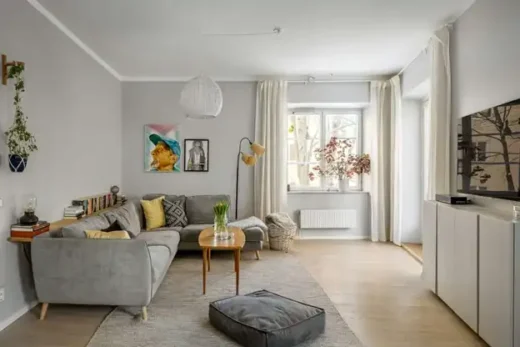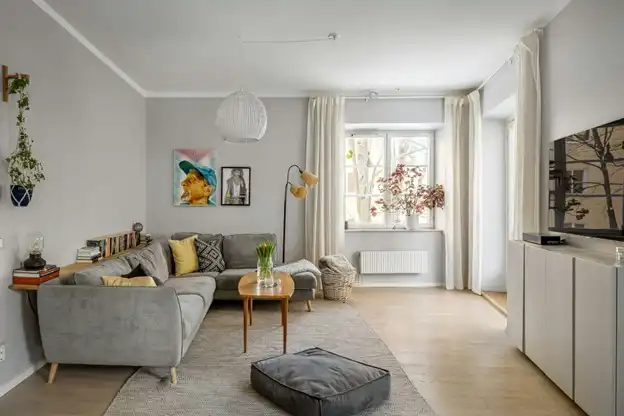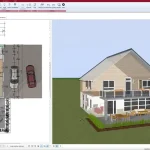How interior design shapes well-being in compact city living, Property firm advice, Company tips
How Interior Design Shapes Well-Being in Compact City Living
26 July 2025

Photo by Lisa Anna on Unsplash
In the hustle and bustle of urban life, compact city living has become a reality for millions. Small apartments, cozy studios, and shared spaces define the modern urban experience. While these spaces offer convenience and proximity to city amenities, they can also feel restrictive. This is where interior design steps in as a powerful tool to enhance well-being, transforming limited square footage into a sanctuary of comfort, functionality, and style. Thoughtful interior design not only maximizes space but also promotes mental and physical health, creating environments that nurture and inspire.
The Connection Between Interior Design and Well-Being
Interior design is more than aesthetics; it’s about creating spaces that support the emotional, psychological, and physical needs of their inhabitants. In compact city living, where space is at a premium, the impact of design choices is amplified. A well-designed space can reduce stress, improve mood, and enhance productivity, while a poorly designed one can lead to feelings of claustrophobia and discomfort.
Psychological Benefits of Thoughtful Design
The layout, colors, and textures in a small space can significantly influence mental health. For instance, clutter in a compact apartment can create a sense of chaos, leading to anxiety. By contrast, a minimalist design with clean lines and organized storage can foster a sense of calm. Natural light, too, plays a critical role. Studies show that exposure to daylight boosts serotonin levels, improving mood and focus. In small urban homes, maximizing natural light through large windows or strategically placed mirrors can make a space feel larger and more uplifting.
Physical Health and Functional Spaces
Compact living spaces often require multifunctional furniture and layouts to meet daily needs. A poorly designed space can lead to physical discomfort, such as cramped seating or inadequate workspaces. Ergonomic furniture, like adjustable desks or chairs, supports physical health by promoting proper posture. Additionally, incorporating air-purifying plants or proper ventilation can improve indoor air quality, which is especially important in densely populated urban areas where pollution levels may be high.
Key Elements of Interior Design for Compact Spaces
Designing for small spaces requires creativity and intentionality. Below are key elements that can transform a compact urban home into a haven of well-being.
Maximizing Space with Smart Storage Solutions
Storage is a cornerstone of compact living. Clutter can quickly overwhelm a small space, making it feel suffocating. Built-in shelves, under-bed storage, and multi-purpose furniture, such as ottomans with hidden compartments, help keep belongings organized without sacrificing style. Vertical storage solutions, like wall-mounted shelves or tall, narrow cabinets, make use of often-overlooked wall space, freeing up floor area for movement and relaxation.
Color and Light: Creating an Airy Atmosphere
Color plays a pivotal role in shaping the perception of space. Light, neutral tones like soft whites, beiges, or pastels can make a room feel larger and more open. Accent walls in bold colors or patterns can add personality without overwhelming the space. Mirrors are another powerful tool, reflecting light and creating the illusion of depth. For example, a large mirror placed opposite a window can double the perceived size of a room while amplifying natural light.
Biophilic Design: Bringing Nature Indoors
Biophilic design, which incorporates natural elements into interiors, is particularly effective in urban settings. Plants, natural materials like wood or stone, and nature-inspired artwork can create a sense of tranquility. In compact spaces, vertical gardens or small potted plants can introduce greenery without taking up valuable floor space. These elements not only enhance aesthetics but also improve air quality and reduce stress, contributing to overall well-being.
Personalization and Emotional Connection
A home that reflects personal style and values fosters a deeper emotional connection, which is essential for well-being. In compact spaces, personalization must be strategic to avoid clutter.
Curating Meaningful Decor
Rather than filling a space with generic decor, choose pieces that tell a story or hold sentimental value. For instance, a single piece of art or a carefully selected luxury home accessory, like a handcrafted vase, can serve as a focal point without overcrowding the space. These curated items add character and make the space feel uniquely yours, enhancing your sense of belonging and comfort.
Flexible Layouts for Evolving Needs
Urban dwellers often lead dynamic lives, and their spaces need to adapt. Modular furniture, such as foldable tables or sofa beds, allows for flexibility in small apartments. For example, a dining table that doubles as a workspace can accommodate both social gatherings and remote work. This adaptability reduces stress by ensuring the space meets changing needs without requiring constant reorganization.
Creating Zones in Compact Spaces
In small apartments, creating distinct zones for different activities—such as sleeping, working, and relaxing—can enhance functionality and mental clarity. Open-plan layouts, common in urban homes, benefit from subtle divisions to define these zones.
Using Furniture to Define Spaces
Rugs, bookshelves, or even a strategically placed sofa can act as visual dividers in an open-plan space. For example, a low bookshelf can separate a living area from a sleeping nook, creating the illusion of separate rooms. This zoning helps maintain a sense of order, making it easier to transition between activities like work and leisure, which is crucial for mental well-being.
Multi-Functional Furniture for Versatility
Furniture that serves multiple purposes is a game-changer in compact living. A Murphy bed that folds into the wall during the day can transform a bedroom into a living room or office. Similarly, a coffee table with lift-top storage can double as a desk. These solutions maximize space while ensuring the home remains functional and comfortable.
The Role of Technology in Modern Urban Design
Technology is increasingly integrated into interior design, offering solutions that enhance both convenience and well-being in compact spaces.
Smart Home Features for Efficiency
Smart lighting systems, like those controlled by apps or voice assistants, allow residents to adjust brightness and color temperature to suit their mood or task. For instance, cool lighting can boost focus during work hours, while warm lighting creates a cozy atmosphere for relaxation. Smart thermostats and air purifiers also contribute to a healthier living environment, which is especially important in urban areas with limited ventilation.
Compact Tech for Small Spaces
In small apartments, bulky electronics can dominate the space. Opting for sleek, compact devices—like wall-mounted speakers or slim TVs—ensures technology integrates seamlessly without overwhelming the room. Cable management systems also help maintain a tidy, stress-free environment.
Cultural and Social Influences on Urban Design
City living often reflects diverse cultural influences, and interior design can celebrate this diversity while promoting well-being.
Incorporating Cultural Elements
Incorporating cultural or heritage-inspired elements, such as textiles, patterns, or artwork, can make a space feel more personal and grounded. For example, a small apartment might feature a Moroccan-inspired rug or Japanese minimalist furniture, reflecting the resident’s cultural background or aesthetic preferences. These touches create a sense of identity and comfort.
Designing for Community and Connection
Compact living doesn’t mean isolation. Designing spaces that encourage social interaction, such as a cozy seating area for guests or a communal dining table, fosters connection. In urban environments, where loneliness can be a challenge, these design choices help build a sense of community within the home.
Sustainability in Compact Urban Design
Sustainable design is increasingly important in urban settings, where resources are often limited. Eco-friendly choices not only benefit the environment but also enhance well-being by creating healthier living spaces.
Eco-Friendly Materials and Practices
Using sustainable materials, like reclaimed wood or low-VOC paints, reduces environmental impact and improves indoor air quality. Energy-efficient appliances and LED lighting also lower utility costs, reducing financial stress for urban dwellers. These choices create a sense of responsibility and connection to the broader world, which can boost emotional well-being.
Long-Lasting, Timeless Designs
Investing in durable, high-quality furniture and decor ensures longevity, reducing the need for frequent replacements. Timeless designs that avoid fleeting trends create a sense of stability and satisfaction, contributing to a more grounded living experience.
Comments on this guide to How interior design shapes well-being in compact city living article are welcome.
Edinburgh Architecture
Contemporary Scottish Capital Property Designs – recent architectural selection below:
Vision for National Centre for Music at Royal High School
New National Centre For Music Edinburgh
British Medical Association HQ Edinburgh
Design: John Robertson Architects (JRA)
Powderhall Stables Building
Powderhall Stables Building
Comments / photos for the How interior design shapes well-being in compact city living advice article page welcome.




